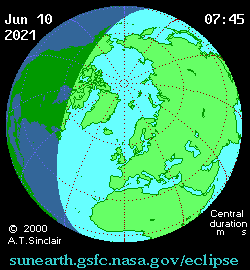Eclipse in Canada, Greenland, Russia (Partial in USA)
June 10, 2021 – Annular Solar Eclipse
An annular solar eclipse occurs when the Moon’s apparent diameter is smaller than the Sun’s, blocking most of the Sun’s light and causing the Sun to look like an annulus (ring).
Photo Credit: Stefan Seip
The annular eclipse started at 09:55 UTC for 3 minutes 37 seconds along the northern shore of Lake Superior in Ontario, Canada.

It was visible from parts of northeastern Canada, Greenland, the Arctic Ocean (passing over the North Pole), and the Russian Far East. The partial eclipse was visible in northeastern North America, most of Europe, and northern Asia.
A visualization of the Moon’s shadow during the June 10, 2021 annular solar eclipse showing the antumbra (black oval), penumbra (concentric shaded ovals), and path of annularity (red). Images of the Sun show its appearance in a number of locations, each oriented to the local horizon.
Credits: NASA’s Scientific Visualization Studio/Ernie Wright
From the beginning of the eclipse to the annular solar eclipse is about 1 hour 15 minutes.
The duration of the annular solar eclipse ranges from seconds to over 4 minutes. From the end of annularity to the end of the eclipse is about 1 hour, 15 minutes.
The annular solar eclipse begins at sunrise over southern Ontario and ends at sunset in far-eastern Russia. The times of greatest eclipse (in Coordinated Universal Time) and the degree of maximum eclipse obscuration by percent.
While relatively few will see the perfect annulus in southern Ontario, many will enjoy a dramatic view of a deep partial eclipse at sunrise. At the right location, you may see horns of the Sun rising above the water at sunrise! Good places to see this phenomenon are around Thunder Bay, Sault Ste Marie, Toronto, Philadelphia, New York City, and Atlantic City. Other places will see the rising Sun appear as a shark’s fin, such as Ottawa, Montreal, and Boston.
In the United States, the partial eclipse will be visible along parts of the Southeast, Northeast, Midwest, and in Northern Alaska. In many of these locations, the eclipse will occur before, during, and shortly after sunrise. This means that viewers will need to get a clear view of the horizon during sunrise in order to see the eclipse.
- Date: Thursday, June 10, 2021
- Gamma: 0.9152
- Magnitude: 0.9435
- Saros: 147 (23 of 80)
- Greatest eclipse: 231 sec (3 m 51 s)
- Coordinates: 80.8°N 66.8°W
- Max. width of band: 527 km (327 mi)
On June 10, 2021, people across the northern hemisphere had the chance to experience an annular or partial eclipse of the Sun.
Watch the replays & see photos of the event!
Note: The telescope being streamed will be too far south to see the full annular effect. Stream courtesy of Luc Boulard, Royal Astronomical Society of Canada Sudbury Centre.
Live stream from timeanddate.com
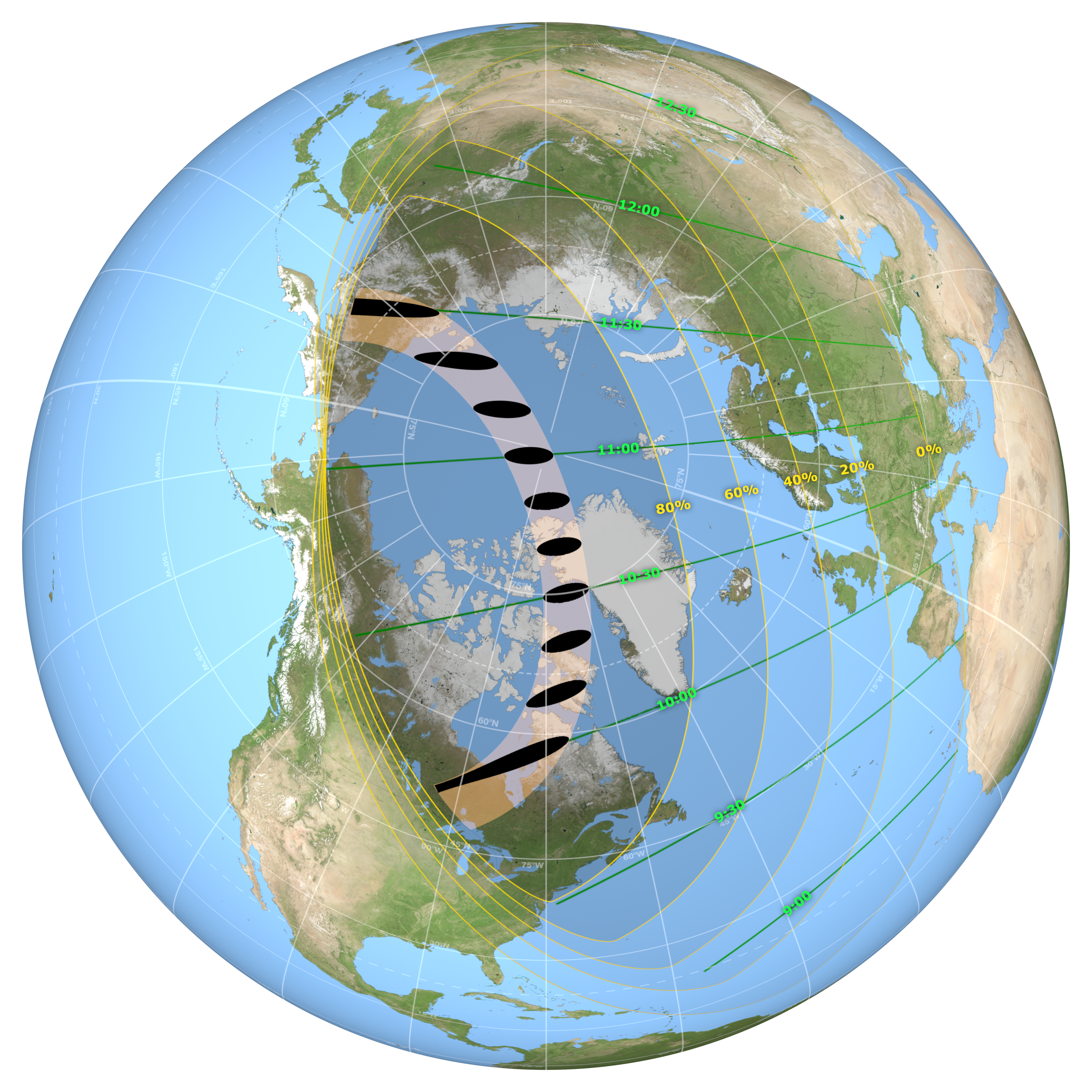
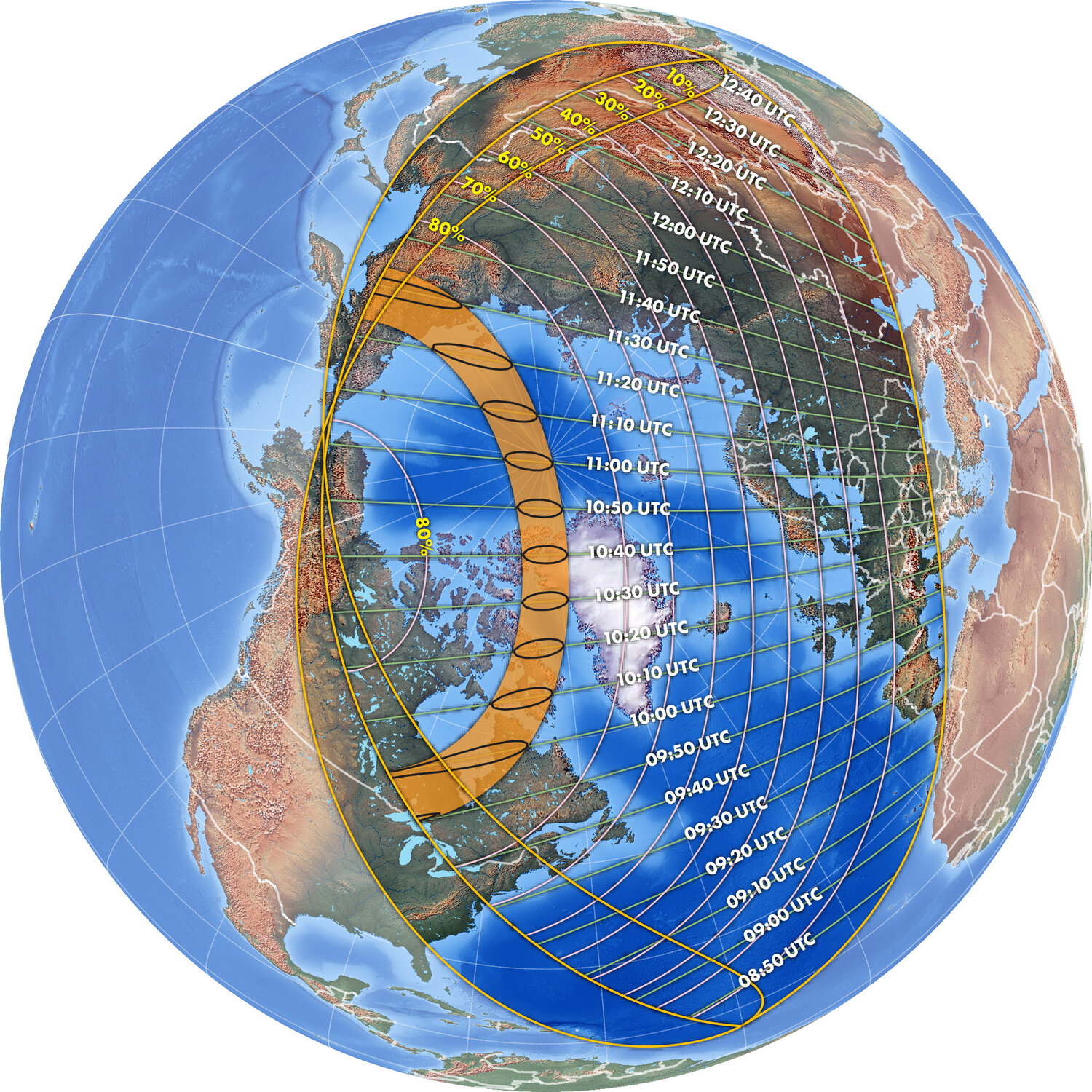
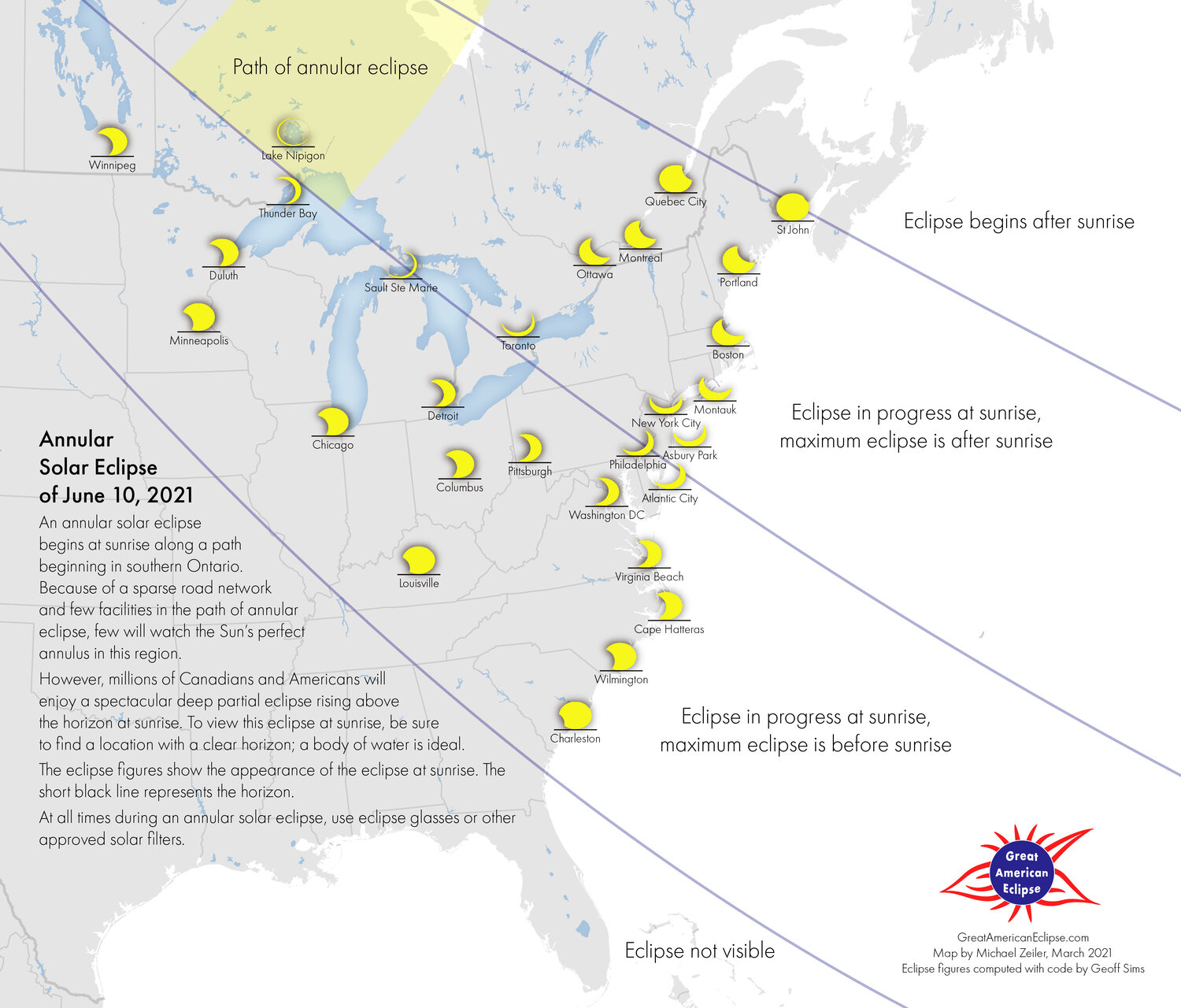
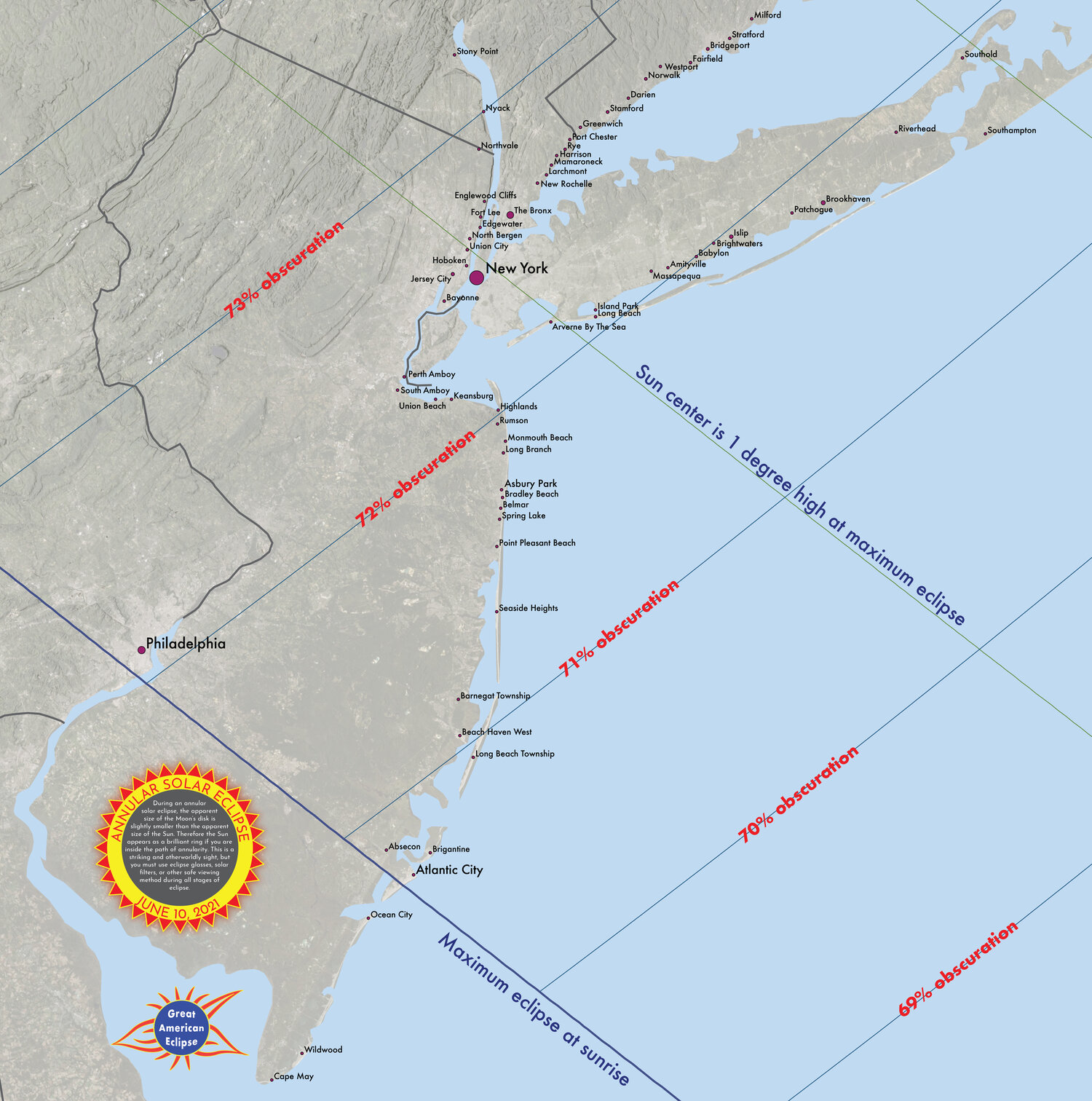
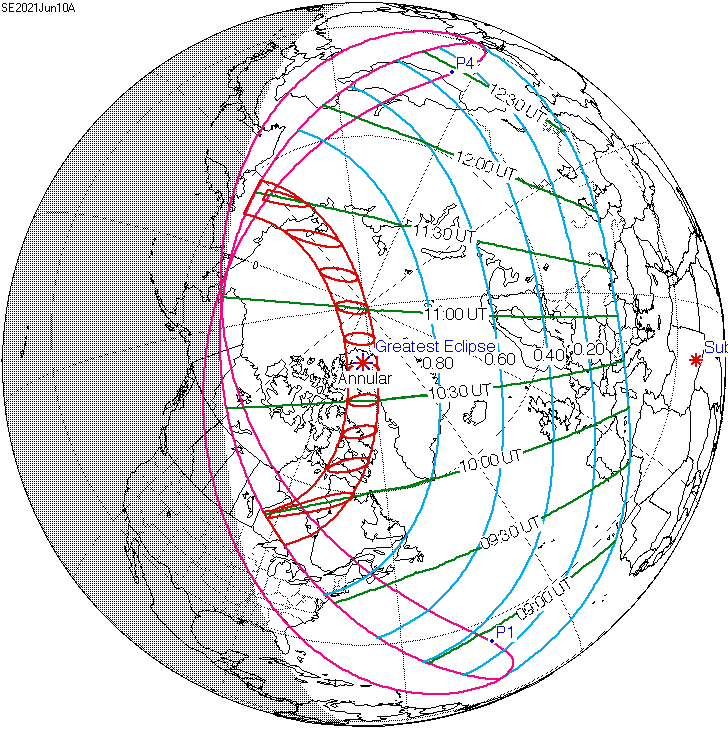
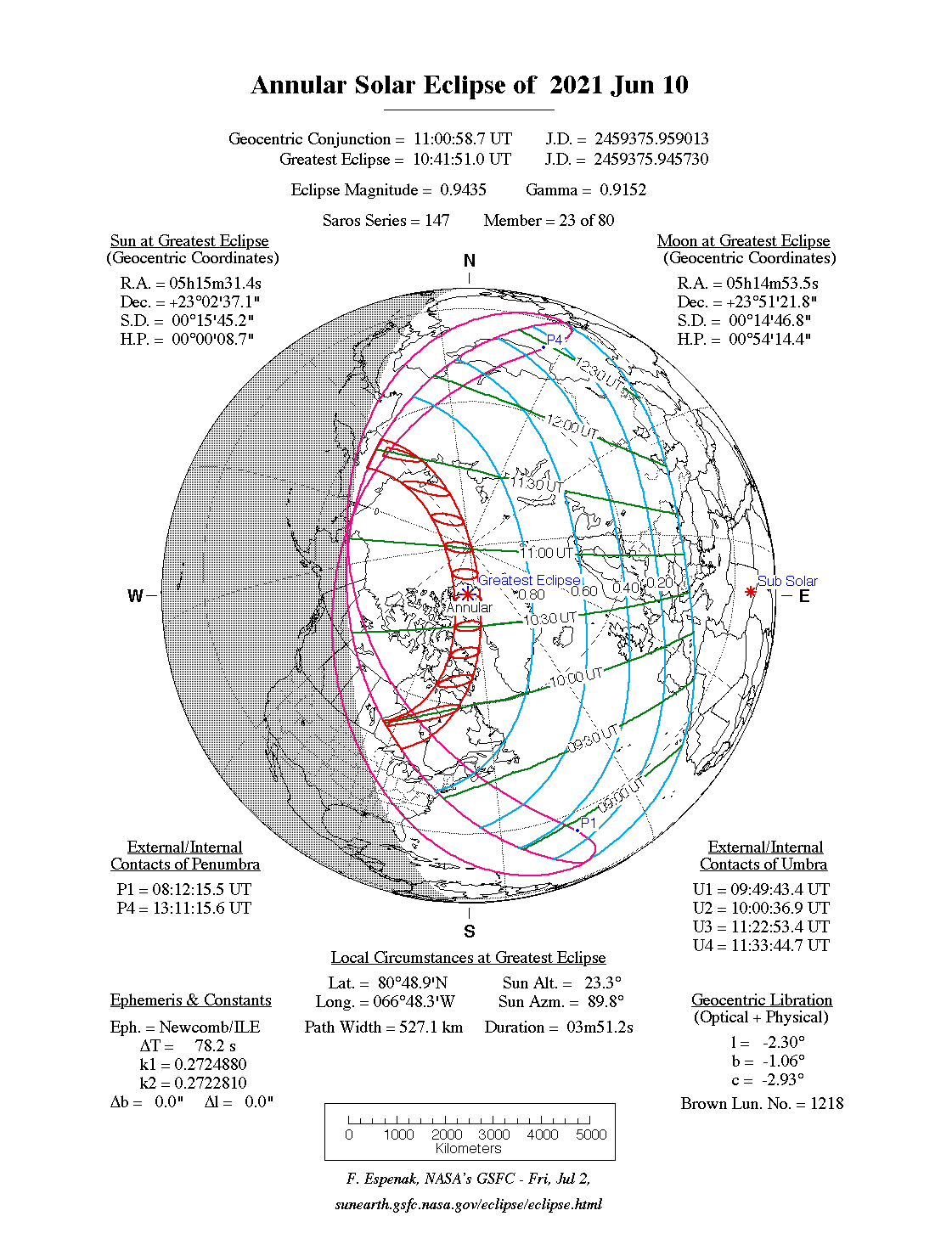
The Partial Experience
If you’re not in the direct path for a total or annular eclipse—but still within the outside of the path—this is what you may have seen with proper eye protection.
In some places, viewers didn’t get to see this ring around the Moon. However, they experienced a partial solar eclipse if within range as the map above shows. This happens when the Sun, Moon, and Earth are not exactly lined up. The Sun will appeared to have a dark shadow on only part of its surface. Viewers in parts of the eastern United States and northern Alaska saw a partial solar eclipse on June 10, along with much of Canada and parts of the Caribbean, Europe, Asia, and northern Africa.
In the United States, the partial eclipse was visible along parts of the Southeast, Northeast, Midwest, and in Northern Alaska. In many of these locations, the eclipse will occur before, during, and shortly after sunrise. This meant that viewers will need to get a clear view of the horizon during sunrise in order to see the eclipse.
June 10, 2021
“I got very lucky! I was on top of a 6-story parking lot, right above the treeline in the direction of the sunrise. At the maximum point, the sun was coming from from a cloud bank. I was able to see the partial eclipse through a narrow break in the clouds before it disappeared into the clouds above!
I had eclipse glasses and Alex’s solar binoculars with magnification. I highly recommend preparing for your next viewing opportunity by getting a pair with as much magnification as you can. Also figure out some tricks to steady them—practice ahead and look for tips online. I steadied them on my car’s roof and could see the partial eclipse and wisps of clouds. I also called Alex to share in the excitement. He had just finished a radio interview about it, and was busy sharing post on our social feeds.
I only had a few precious minutes, so I watched and quickly snapped a photo to show the conditions, but didn’t try to mess with a better photo capturing the eclipse. There are plenty of other people with better conditions who captured it, and my plan was to gather some here. Next time you see an eclipse, be in the moment & enjoy it! Appreciate seeing one of the wonders of the universe with your own eyes.
The photos below show how the viewing conditions also lined up perfectly: just above the trees, to the left of highrise buildings, finding an easy-to-access location to see it, and narrow break in the clouds!
As a bonus, I had a serenade of 17-year-cicadas! Total solar eclipses have the 360-degree sunset effect, but I had the 360-degree sunrise+cicada effect. Truly spectacular!
The only downside is that C. Alex Young (The Sun Today co-founder & my husband) was in Georgia and out of range of viewing it. We have each seen 2 of the past solar eclipses, but none together. It’s another reminder of just how special these moments are. It’s worth a little bit of effort to try and see it. Each one is unique. Even if you’re in the right place at the right time, you can still have a cloud blocking your view. We have both experienced that disappointment. The upside is those disappointments mean that I appreciated this partial solar eclipse even more!
If you couldn’t see it, or like my friend feel frustrated that you didn’t wake up for it…take a breath and let that go. Take some time when you can to check out what other people are sharing. That’s part of the joy of eclipses! Everyone has an experience and it’s amazing to share. Focus on this, and feel the excitement from what others were able to capture. The universe is a big place. We will never see everything with our own eyes. Learn to enjoy what others have found, and you’ll still feel joy. There is a lot of sadness in people’s hearts, and space is an opportunity to step outside of that, even if only second-hand and/or for a few moments. Enjoy!”
– Linda Schenk, The Sun Today co-founder • June 10, 2021
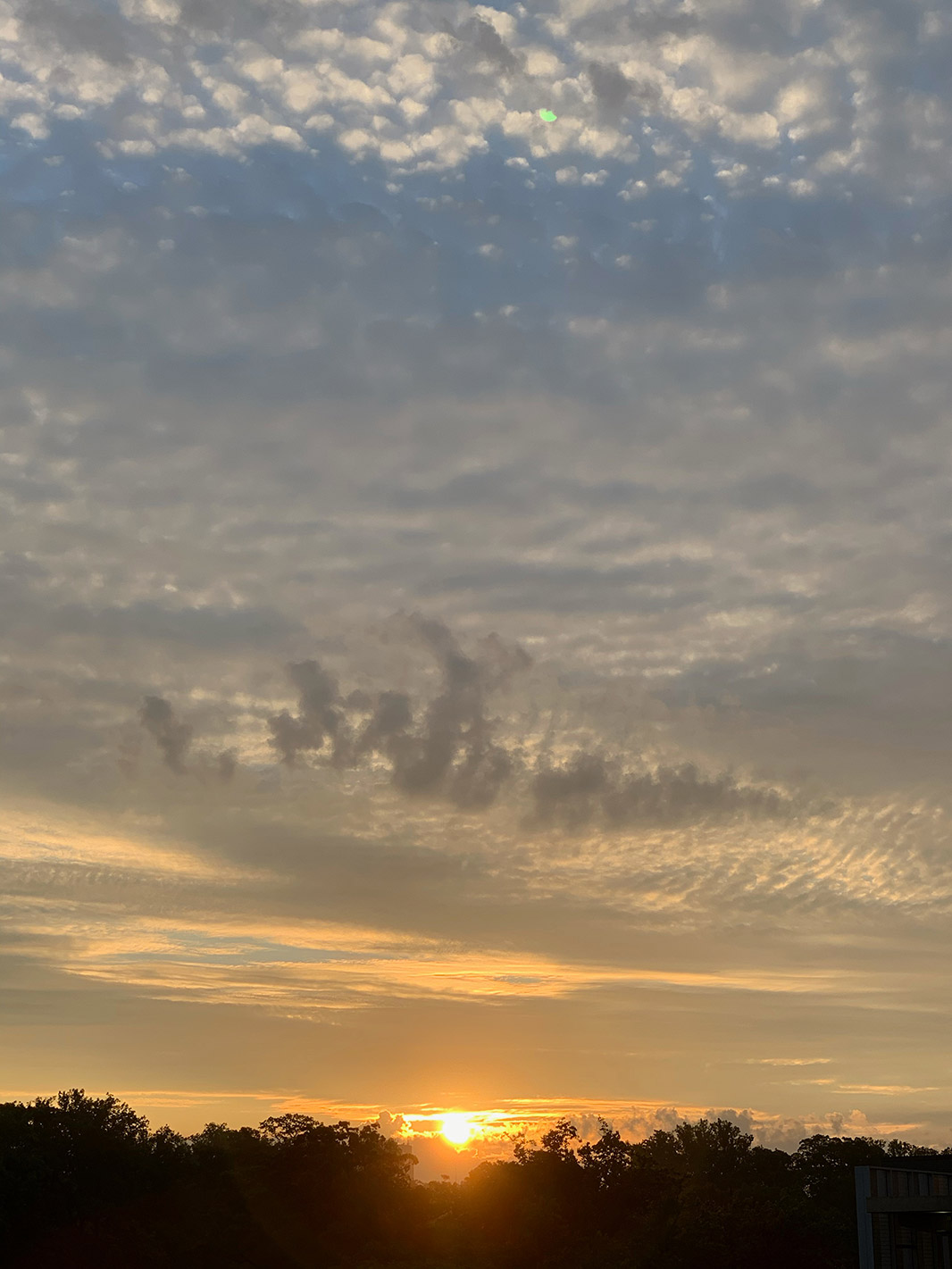
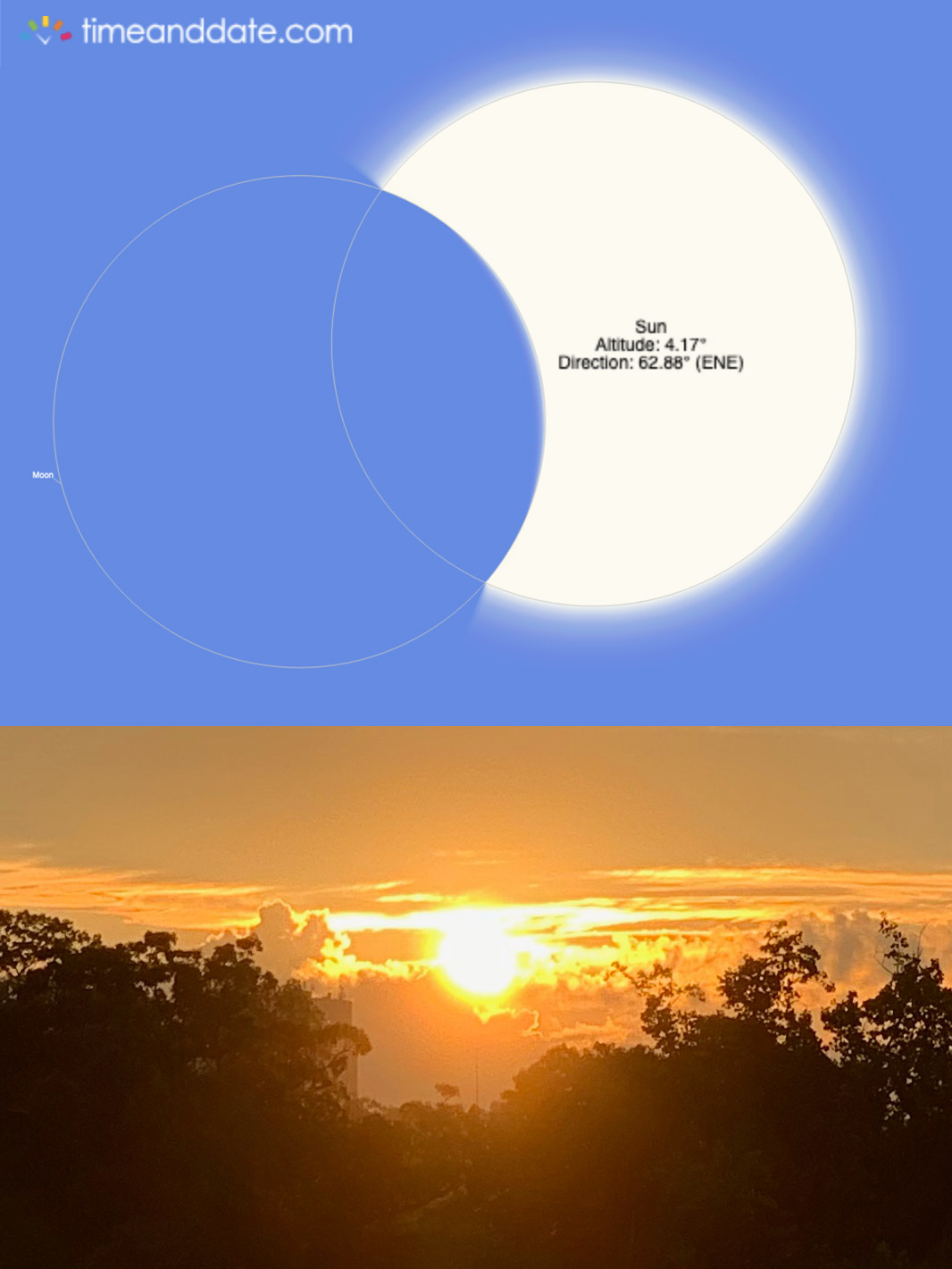
Eclipse Highlights
June 10, 2021
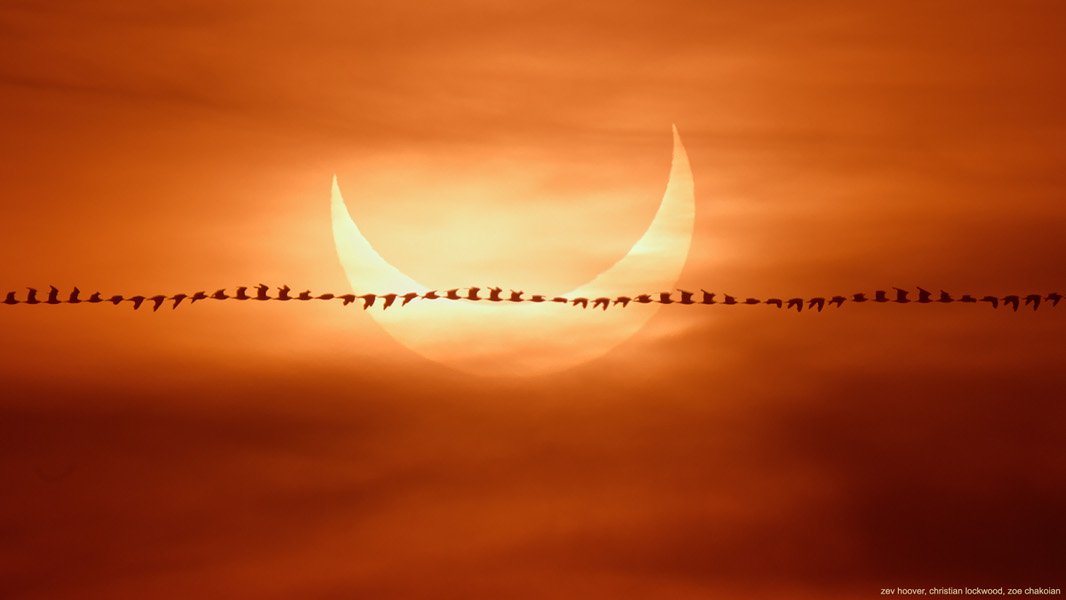
Eclipse Flyby – Image Credit & Copyright: Zev Hoover, Christian A. Lockwood, and Zoe Chakoian
Explanation: On June 10 a New Moon passed in front of the Sun. In silhouette only two days after reaching apogee, the most distant point in its elliptical orbit, the Moon’s small apparent size helped create an annular solar eclipse. The brief but spectacular annular phase of the eclipse shows a bright solar disk as a ring of fire when viewed along its narrow, northerly shadow track across planet Earth. Cloudy early morning skies along the US east coast held gorgeous views of a partially eclipsed Sun though. Rising together Moon and Sun are captured in a sequence of consecutive frames near maximum eclipse in this digital composite, seen from Quincy Beach south of Boston, Massachusetts. The serendipitous sequence follows the undulating path of a bird in flight joining the Moon in silhouette with the rising Sun.
Winner!
Crescent sunrise ☀️🌙🌎❤️#PartialSolarEclipse
over Baltimore from my friend
Tim Shahan #SolarEclipse pic.twitter.com/C7yXaUtKDn— Justin Berk (@JustinWeather) June 10, 2021
This morning’s partial solar #eclipse over Toronto with the #CNTower. Hope you like it… https://t.co/BFyxFFw2DE for all of my night sky pics. #Eclipse2021 #solareclipse2021 #ShareYourWeather #PartialSolarEclipse 💕📷 pic.twitter.com/oHHUdW8eGx
— Kerry LH💫 (@weatherandsky) June 10, 2021
These are the stunning pictures of the annular solar eclipse that occurred on June 10, 2021.#Eclipse2021 #RingofFire #SolarEclipse pic.twitter.com/TDChd5Ao2g
— Berri News (@BerriNewsHQ) June 11, 2021
Husband got this shot through the clouds of the sunrise #PartialEclipse here in northern Massachusetts!
☀️🌗🌎(I was in bed, I don’t get up this early for anything other than a total eclipse 😝)#PartialSolarEclipse pic.twitter.com/O4odhyMfcM
— Erin M. May, PhD (@_astronomay) June 10, 2021
My best shots of today’s eclipse, captured through gaps in the clouds over Somerset.
All were taken using specialist solar filters. To get a sense of scale, have a look at the little Earth icon I’ve dropped into the 3rd pic.#PartialSolarEclipse #SolarEclipse #solareclipse2021 pic.twitter.com/VMNTJFbXjR
— Will Gater (@willgater) June 10, 2021
Amazing click of the ring of fire solar eclipse… https://t.co/6zTWR4FHEI#RingofFire #SolarEclipse #solareclipse2021 pic.twitter.com/78nG6rtPbF
— Planet Custodian (@PlanetCustodian) June 11, 2021


